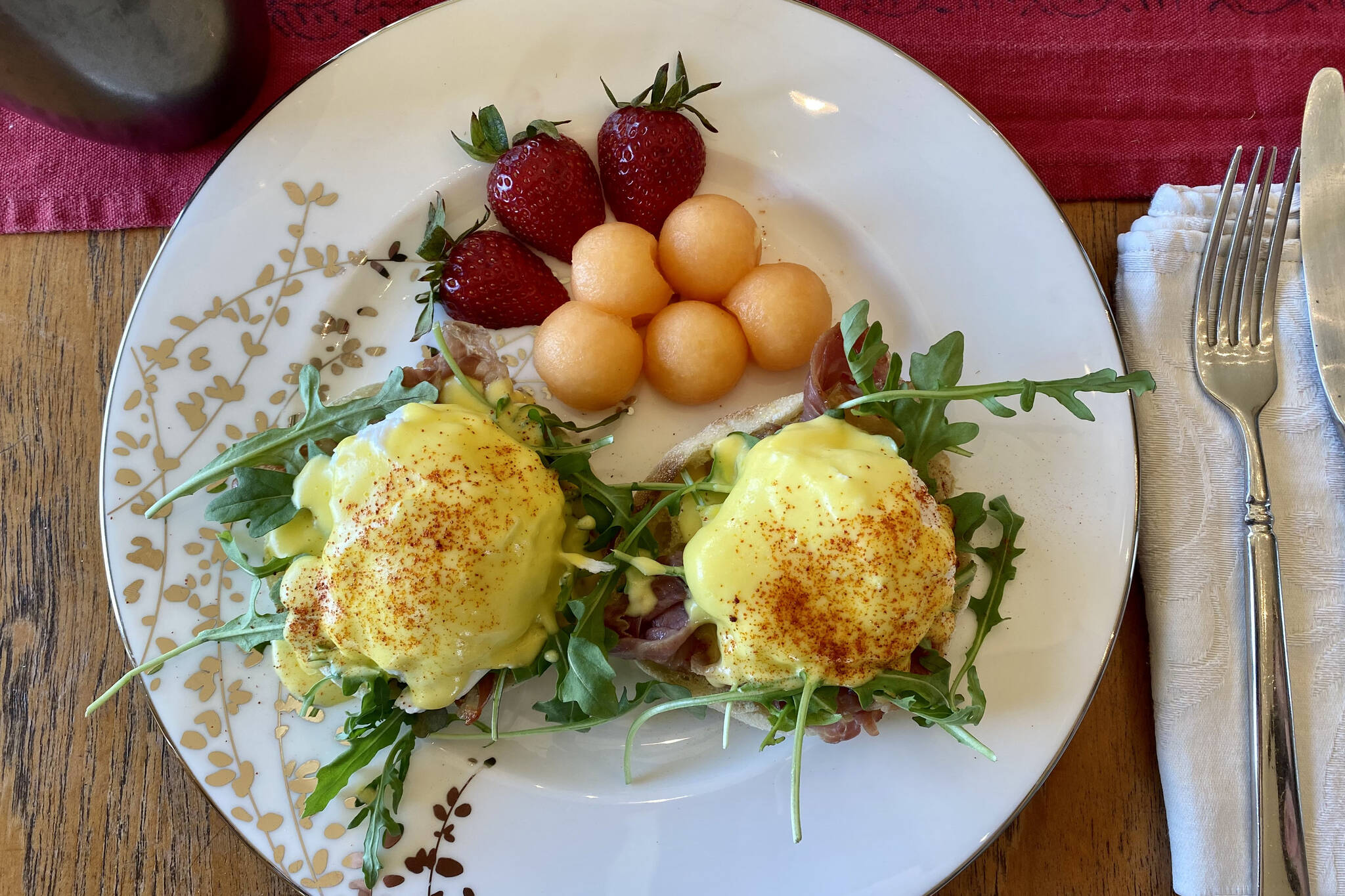This Mother’s Day article was supposed to be very different.
I had planned a joyous announcement and a celebration of the most wondrous stage of motherhood, but that ended some few weeks ago when the light I had been carrying went out.
The shadow that has remained over my heart since then has haunted me day and night. With the great power to create life comes the burden of its fragility, and the bitterness of a mother’s grief at this unfortunately common event.
Many who have suffered this loss believe they must bear it in silence for the sake of propriety. Obviously, I disagree.
This pain will pass, and mostly has, thanks to my loving family and child — a child who has taken to greeting me in the mornings with a cheerful “Hi, honey!” Someday soon I’m sure I will be making that happy proclamation, but until then, I am lucky to have my sweet little honeybee buzzing around me all the time to fill my days with joy.
This year for Mother’s Day brunch I went with a classic: eggs Benedict. This dish (and this holiday) is a nightmare when you work in a restaurant but making this for a home setting is much easier, and with a few tricks up your sleeve, you can serve this to your own mom with confidence.
Eggs Benedict with hollandaise
Ingredients for hollandaise
4 egg yolks
2 tablespoons lemon juice
1 stick unsalted butter, melted and cooled
Salt to taste
Ingredients for Eggs Benedict for 4
8 eggs
4 English muffins, halved
3 ounces prosciutto
1-2 cups baby arugula
Paprika garnish
Directions for hollandaise:
Set the egg yolks and lemon juice in a bowl over a double boiler and whisk vigorously and continuously until the eggs are thick and have increased in volume.
Slowly pour the melted butter into the sauce, continuing to energetically whisk until all the butter has been incorporated, the sauce has doubled in volume, and has thickened enough to coat the back of a spoon.
Taste and season with salt and extra lemon juice.
Cover and keep warm until ready to serve.
Directions for eggs Benedict:
Set a large saucepan of water over high heat and add a few tablespoons of white vinegar. This will help the egg whites to stay together when poaching.
Crisp the prosciutto on a hot pan and set aside.
When the water is just about to boil, turn the heat down to medium. Do not allow the water to boil.
Crack an egg directly into the water and use a spoon to gently swirl the water around the egg a couple times. This will improve the chances that your egg will stay together and won’t stick to the bottom of your pan.
Repeat this procedure with the rest of the eggs as quickly as possible. You may want to do this in two batches to prevent the first eggs from overcooking.
While the eggs are poaching, toast your muffins until slightly browned and begin assembling your plates.
Layer some prosciutto on each muffin, then cover with washed arugula.
The poached eggs will be ready to plate after about 4 minutes in the water. Try your best to remove them in the order they were cracked so they will be evenly cooked.
With a slotted spoon, very gently lift an egg out of the water, dab the bottom of the spoon onto a clean towel to remove excess moisture, then lay the egg on the bed of arugula. Repeat with each egg.
Check the hollandaise. It likely thickened slightly, but it can be saved by whisking in a teaspoon of hot water right before serving.
Garnish with a dusting of paprika or cayenne pepper.
I served with fresh strawberries and cantaloupe.

